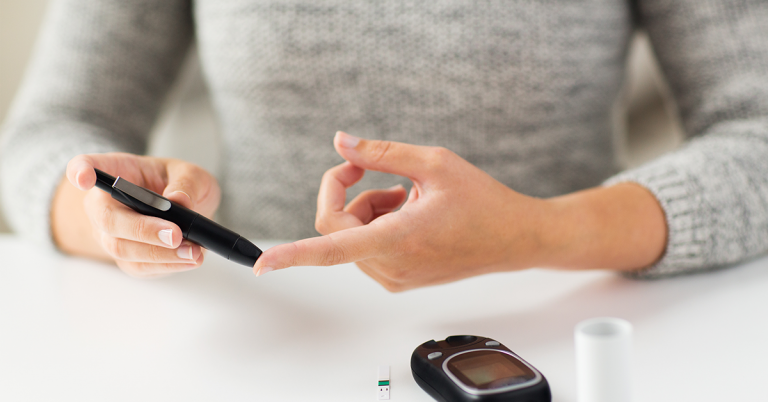Approximately 35 million Americans are living with diabetes. This chronic condition presents itself in three main types: type 1 (T1D), type 2 (T2D), and gestational. Regardless of which type you have, diabetes means your body has a problem not producing enough insulin or resists its effects. When your body cannot turn sugar (glucose) into the fuel it needs, it can lead to serious complications if not properly managed. It’s time to put diabetes under the microscope.
T1 and T2 Differences

Sugar is a source of energy for our bodies. It is naturally found in our bodies, produced by the liver, and comes from what we eat. For the sugar to make it into the cells, insulin is needed. Insulin is a hormone secreted by the pancreas and is referred to as a “key” that helps the sugar convert into energy and prevents sugar levels from getting too high. With both types, the insulin key function is broken. Here are the specifics to each kind:
- Type 1 Diabetes:
- The immune system mistakenly attacks insulin-producing cells in the pancreas. The body is then not able to produce any insulin, thus also unable to control sugar levels.
- Type 2 Diabetes:
- The body is resistant to insulin and doesn’t respond to its effects. The body then continues to make more insulin to control sugar levels. Over time, the pancreas stops producing insulin as well.
Inside the Body with Type 2 Diabetes
When your body becomes resistant to insulin, it kicks off a chain reaction of events that, if not treated, can lead to long-term problems. As sugar levels remain high, your body will try to get rid of the excess, and you will urinate a lot. You will then be thirsty all the time, because of the frequent urination. Since the sugar can’t make it into energy successfully, you may feel tired all the time. Not everyone with T2D experiences symptoms, and typically they take a while to manifest.
Metformin and Diabetes
If type 2 diabetes cannot be controlled with diet and exercise, then the first line of treatment usually involves metformin. Metformin works to lower sugar levels in the blood by increasing insulin sensitivity of muscle cells so the sugar can be turned into energy. It also reduces the amount of sugar produced by the liver. It is taken alone or in conjunction with other anti-diabetic medications.

Clinical research continues to bring an understanding of why some people develop diabetes, and others do not. Family history, obesity, and lack of activity increases your risk of developing it, though a lot is still not understood about what triggers it and why.
If you have type 2 diabetes and are taking metformin, upcoming clinical research studies may be an option. To learn more about future studies looking into potential new options, call (937) 424-1050, or visit us here.
References:
https://www.mayoclinic.org/diseases-conditions/type-2-diabetes/symptoms-causes/syc-20351193
https://www.diabetes.co.uk/diabetes-medication/glucophage.html





